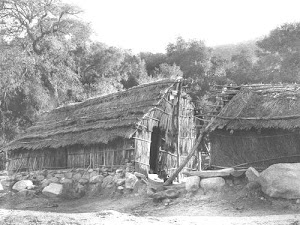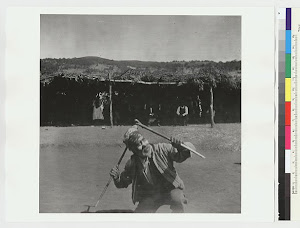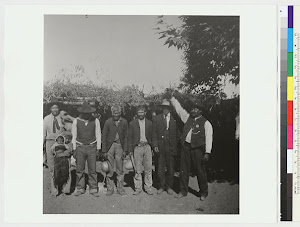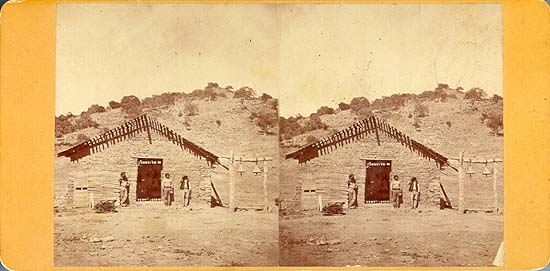A group of Mi-Wuk Indian tribal dancers, who escorted the National Christmas Tree from the Stanislaus National Forest to Washington DC, made history in Washington.
The Indian dancers were the first Native Americans to dance in the Library of Congress, according to the US Forest Service coordinator.
The dancers performed for 15-minutes in front of 700 or more people at a reception following the lighting ceremony: the dance was called a "fun dance," it is to "promote unity and happiness," according to an indian representative.
The dancers, also, performed at the National Museum of the American Indians, to dedicate a 19-ft white fir from the Stanislaus National Forest, which will stand outside of the museum for the holidays.
Every year, in September, the Tuolumne Band of Mi-Wuk Indians have an acorn festival at their Tuolumne Reservation: there's dancing, singing, crafts, and acorn food. One of the popular activities at the festival is the "Hand Game Tournament": they sing spiritual gambling song, as teams compete in guessing "bones."
Thursday, December 15, 2011
California's Native American first to dance in the Library of Congress
Posted by
Karen Vigneault Librarian
at
10:25 AM
0
comments
![]()
Wednesday, December 14, 2011
Santa Ysabel General Store

Howka tribal members, I don't know if everyone heard but the SY general store has been purchased and will reopen. There was a recent Union Tribune article that said they have pictures of many natives.. I am quite sure there are many pics of our family / tribal members.. I am hoping they will allow us to see those pictures..
Here is the article..
The historic Santa Ysabel general store building has been purchased with plans to convert it to a visitor center for back country hikers and tourists.
The Save Our Heritage Organisation bought the 3,000-square-foot building for $295,000 from Bill and Betty Anne Tulloch with broker Donn Bree representing both parties.
Betty Anne is the granddaughter of George Sawday, a back-country cattleman and rancher.
"We're pretty excited," said SOHO Executive Director Bruce Coons. "There's nothing like having a permanent location like that, not just leased. It's such a great historic building. You can't fail to see it at the junction of (state Routes) 78 and 79. It's close to a lot of people's hearts."
Coons said the purchase, SOHO's first in about 40 years, was prompted by worries that the building might be radically altered. The 2,000-member organization operates several other properties for the city and county of San Diego, including the Whaley House in Old Town and Marston House in Balboa Park.
John Curlee built the Santa Ysabel store in 1884 and shortly after it was bought by pharmacist David L. Hoover. Hoover's great-great-granddaughter Zia Munshi writes on her website that she found old photos of the building and area residents in old family scrapbooks.
"There interesting thing is there are many portraits of Native Americans in this album," she says.
Coons said the building is interesting architecturally, since it is the only 19th-century, false-front adobe building in the county.
"It was a center of activity in that area for all the ranches and Native Americans," she said.
Santa Ysabel lies on the road between Ramona and Julian and was a hub of excitement when gold was discovered in the area in 1870.
At one time there was a hotel, livery stable, blacksmith's shop and butcher shop, several houses and a gas station. Its current claim to fame is Dudley's Bakery, which opened in 1963.
"Dudley's is what put modern Santa Ysabel on the map," Coons said.
Plans call for restoring and shoring up the building and opening it to the public in March when SOHO plans to start tours of its Warner's adobe ranch house, which it is leasing from the Vista Irrigation District.
"It's going to be the focal point to send people out to Warner's Ranch," he said. The ranch adobe is national historic landmark, site of a one-time Butterfield Stage stop on the immigrant trail into Southern California.
Besides SOHO, other organizations will install exhibits in the general store and there were will be a small retail operation to serve visitors.
SOHO, known mostly for its urban battles over threatened historic sites, has members interested in rural parts of the county as well, Coons said.
We work with groups in northern Baja California, too," he said. "Our purview has always been the whole county and we have quite a few different initiatives all over the county all the time."
He said SOHO built up enough reserves to buy the property, listed originally at $575,000, and will now probably create a special fund to handle future purchases.
"We've been trying to do that for last 11 years, to preserve historic resources and be in a position when there's a threat," he said. "This has been vacant a long time and it's one of the properties we targeted a long time."
Realtor Bree said the sellers were happy to sell to SOHO, even though they got substantially less than hoped. His office is located across the street and he said other area residents welcome SOHO's plans.
"The vibe around here is it's a very good thing," he said. "People are excited about it. It's kind of a historic landmark and they would like to have the integrity of the building remain unchanged."
He said other proposed uses included a biker bar.
"It's very representative of the ranching area around here," he said. "It's a great launching point. It's also located perfectly for access to a variety of recreational opportunities in the area. It's at the crossroads of 78 and 79, north and south, and if you're hungry, you can go across the street and get pie or bread and other baked goods."
Posted by
Karen Vigneault Librarian
at
12:49 PM
0
comments
![]()












